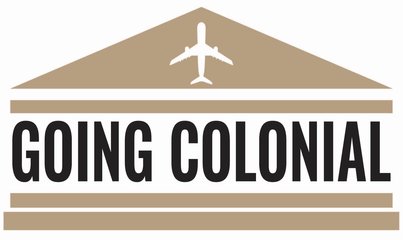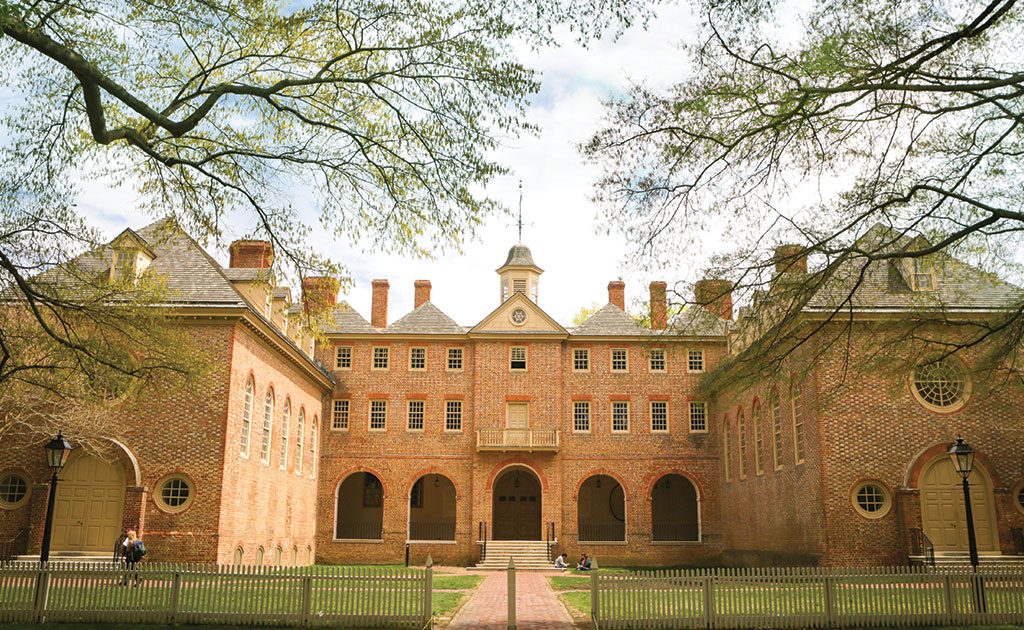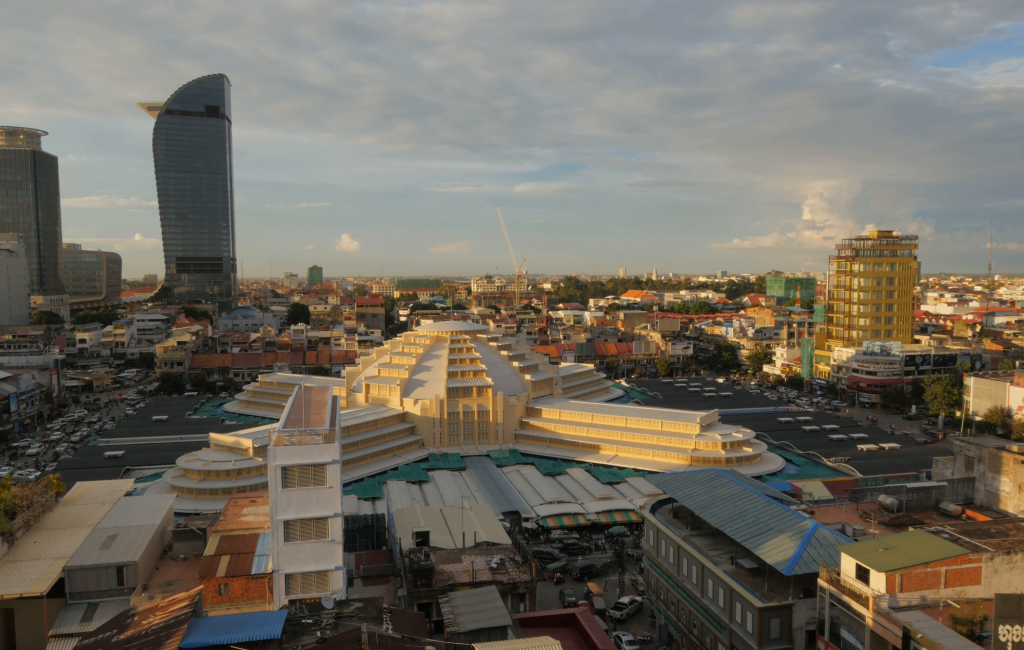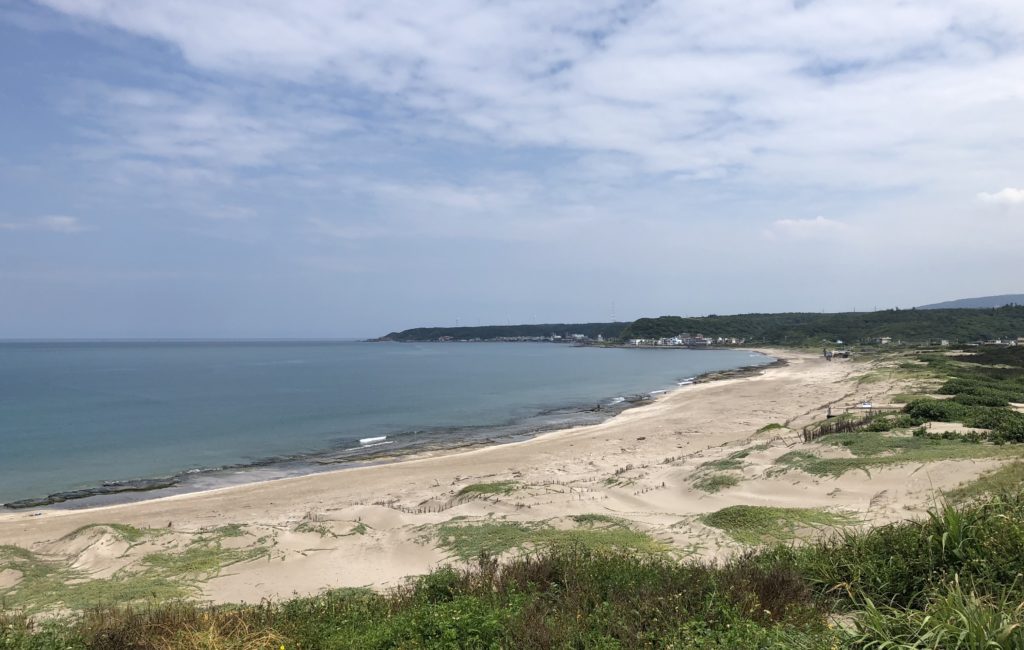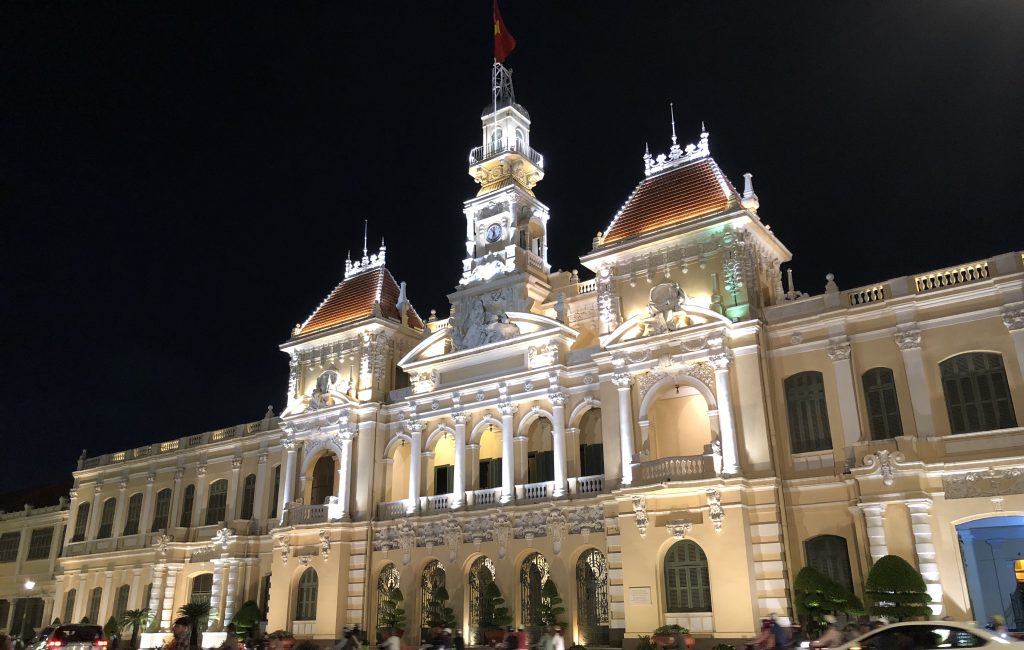
Taking the bus to Taipei-Taoyuan International Airport isn’t particularly exciting, but it certainly is convenient, a theme you’ll find quite often in Taiwan. I discovered they now have 24 hour bus service from Taipei Main Station that will accomodate my 7 am flight to Ho Chi Minh, Vietnam for a quick vacation at 140 NTD ($5 USD).
I broke my rule of no flights before 9 am out of Taoyuan, which had been established because the airport is close to an hour away, meaning you’d need to be awake by 3:30 am and hail a taxi to Taipei Main Station to catch your bus that leaves at 4. And if you missed that one, you’d be cutting it real close. The 24 hour service with buses every 15 minutes makes it slightly easier to have a flight before 9 am.
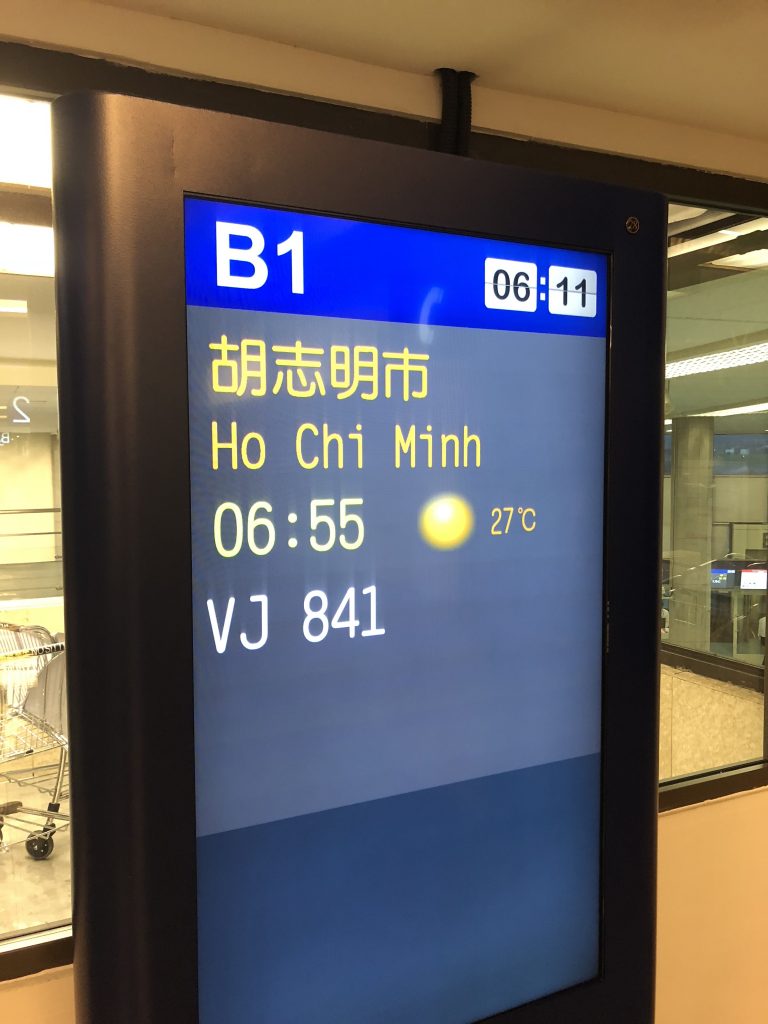
Arriving at the airport at about 1 am, I found a four seat row with another person asleep stretched across two seats, while I could copy his idea, and take the other two. I laid my backpack against the armrest, and with some considerable effort found a comfortable enough position to sleep, flat on the back, knees bent, and feet on the divider. I managed to get three hours of near uninterrupted sleep before awaking at 4:45 am.
After about five minutes, I went through a mental checklist, and realized I had forgotten to print out the Vietnam Visa papers. I scrolled through Google looking for answers, which I found which said in bold letters: “DO NOT FORGET TO PRINT YOUR VISA PAPERS.” I have been in these situations before. I knew to remain calm and a solution will appear. ‘Ok, I have it on my email, there must be some printer I could use around here.’ I thought the life insurance counter would be a good option, but as I was heading in that direction, a lit up circle around a blue ‘i’ grabbed my attention.
Hoping for some good news as I approached, I asked the information desk if they could print visa documents out. Luckily, they obliged. I emailed it to their dedicated gmail account and got my documents. Taiwan’s convenience delivers again.
Vietnam’s Visa process is perplexing for Americans, and many others. There are private sites that will provide the Visa documentation for a fee, and then the Immigration Office at the airport charges a $25 USD stamping fee. Beware that these documents look like a bit of a scam, but they worked. I paid $8 USD on visa-vietnam.org, which I can recommend as reliable and secure.
Relieved after receiving my visa papers, I headed to check in with a big line awaiting me at 5 am. VietJet is Vietnam’s budget carrier, and with the budget carriers can come some serious headaches. However, I didn’t experience any issues, partly because my trip was only two days so I only had a backpack. Instead, I found a huge benefit because I booked seats in the first row round trip for only $15 USD, a steal. No one sat in the middle seat both ways, so I rested my head and slept the whole way there and on my flight back to Taiwan.
Arriving at the airport, I stepped off the plane to similar heat and humidity of Taiwan, Ho Chi Minh being slightly more humid.
Instead of going straight to the Immigration Office window, I made the mistake of lining up in the Passport line. The process could’ve been slightly quicker if I hadn’t, and it ended up taking close to an hour to obtain the visa. Have the exact amount ready for the window because if you give $50 or $100, they’ll return Dong at a poor exchange rate.
I opted for the airport bus to get into the city, which only costs 30,000 Dong (just a little over $1 USD). I was shocked as we went through the city, not at the insane traffic and perpetual running of red lights, but of the amount of colonial buildings standing in the city. Every other block, there were elegant, classical French colonial structures, with some original, some renovated. I had expected a more limited, concentrated amount.
I exited the bus and didn’t go 200 feet before a man in his 40s in torn clothes came up to me carrying a storage box filled with tools, removed a tooth brush and proceeded to clean my shoes. It’s a powerful moment not even five minutes in to my trip, and something many people in the West haven’t experienced. I don’t think these people who are surviving on cleaning shoes are thought of enough, with the luxury we have of throwing them in your washing machine, and simply turning a small knob. Cherish all that you have.
The first piece of colonial architecture I encountered had been one I hadn’t seen much of before, if at all: the Ben Thanh Market. It’s a beautiful structure; square, with a shorter clock tower above the arch-lined facade. But then it started raining. I felt the first drop walking outside near the market, and it felt as big as a marble. The rain lasted for a couple hours, and even flooded the market, where I was essentially trapped for nearly two hours.
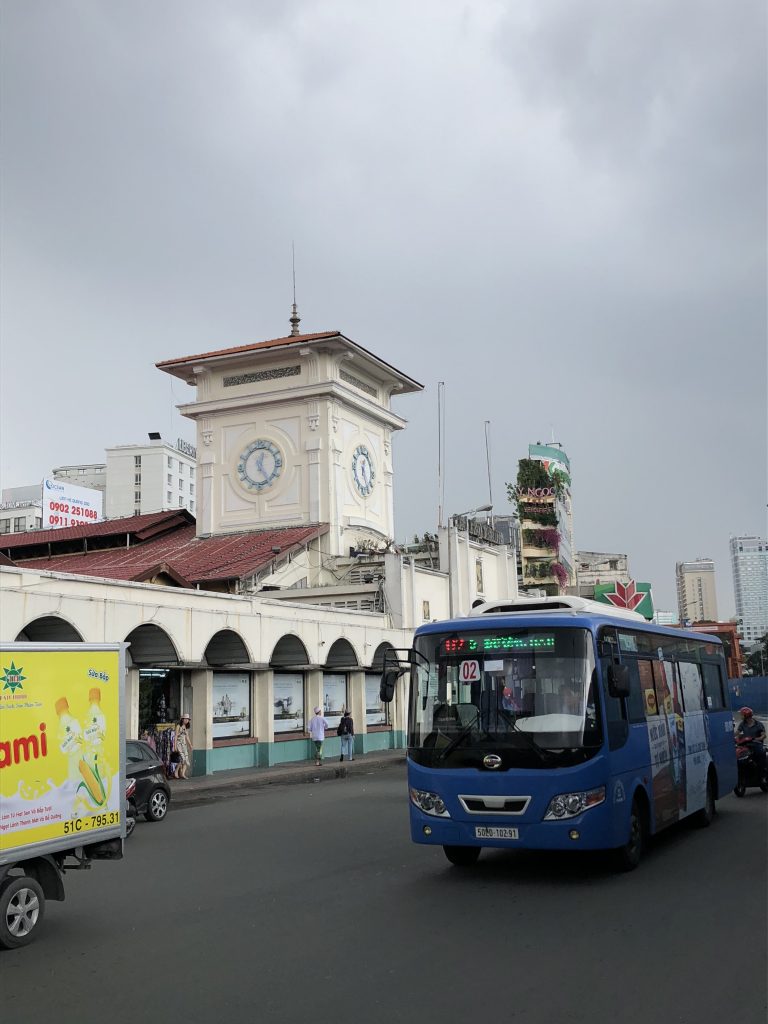
After the rain subsided, I knew my next destination had to be food related. By the time I was hungry, the market vendors had been flooded. Other tourists had taken off their sneakers, and tried to keep their feet out of the water the water, a situation that did not interest me.
I bookmarked a hole in the wall pho place discovered before heading to Vietnam, and enjoyed a huge bowl for 40,000 dong ($1.30 USD).
Taking the scenic route to my hostel, I found colonial structures that I hadn’t seen before, such as the Central Bank and Stock Exchange, and later I found colonial buildings that are now sensibly used as a boutique storefront. Lastly, I discovered the crown jewel of architecture in the Ho Chi Minh, City Hall. Modeled after Paris’ City Hall and constructed in French neoclassical style, the structure sits magnificently at the end of the mall.
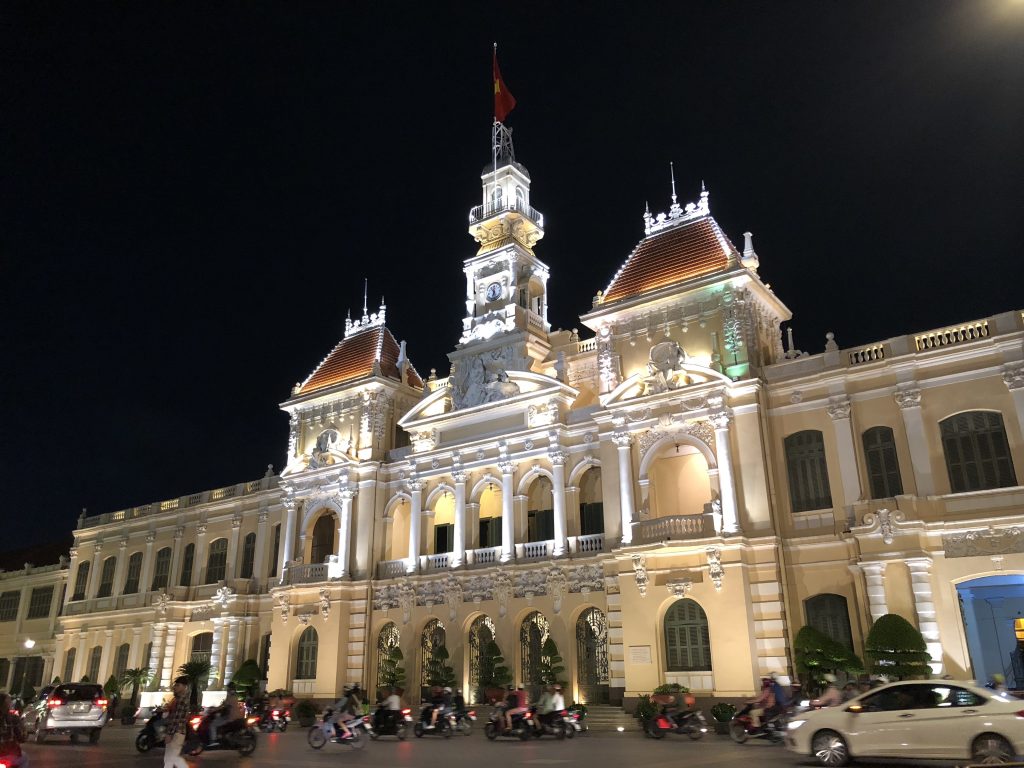
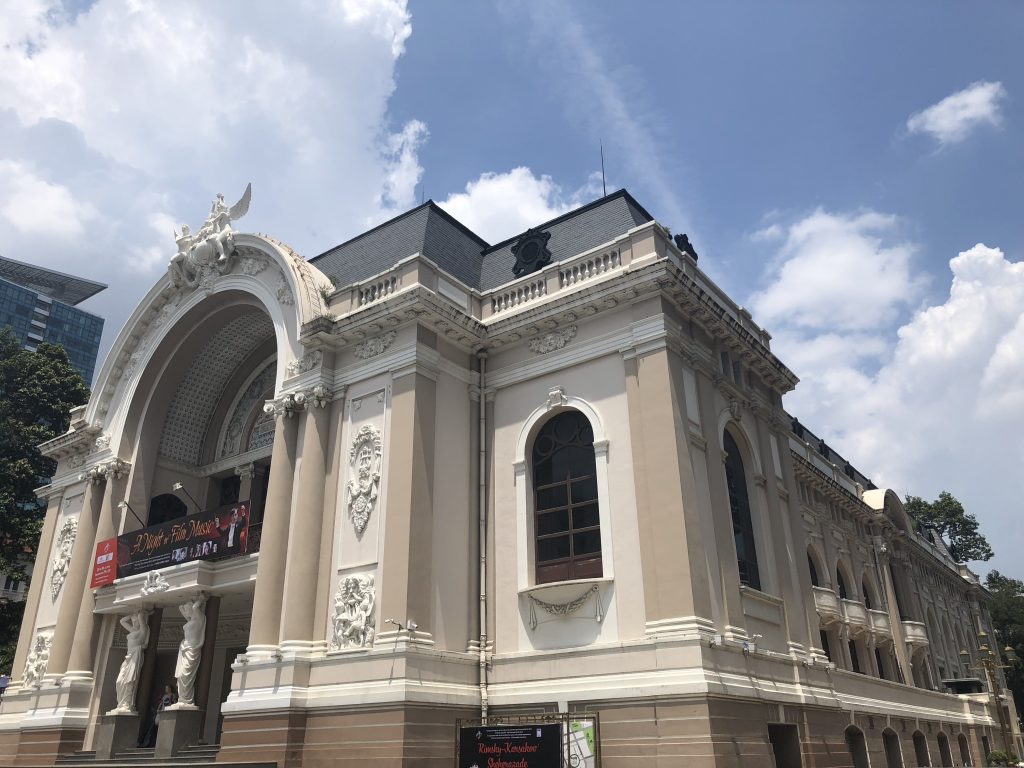
My first impressions of Ho Chi Minh were that it had more soul than other big cities in Southeast Asia, such as Phnom Penh and Manila, due mostly to the heritage buildings and the vibrant feeling the city offers.
I finally found my accommodation after a few minutes of looking, and walked up the steep flight of stairs. The Dorm Saigon is probably one of the best properties for the money in Saigon. A little over $12 USD for two balconies overlooking the city and a main street, as well as a comfortable bed and spotless bathrooms.
Ready to head back out after freshening up, I had dinner plans with a friend I’ve known since I first moved to Taipei, Nydia, and her boyfriend, Michael. The restaurant was kind of upscale, but prices were still reasonable, making it a great choice. The menus at restaurants are huge in Saigon, like a heavy coffee table book, due to various types of food and drink like Thai and smoothies, in addition to Vietnamese cuisine.
Michael had work in the morning, so he went headed home while Nydia and I went out to Bui Vien, the lively street in Saigon. Bui Vien is a spitting image of Siem Reap’s main drag: music that will destroy your eardrums at disco clubs, and hardly anyone inside because the sound literally rattles you. The only difference is that you can find bug vendors in Siem Reap if you’re feeling spiders for dessert.
We were on the look out for the most lively/most quiet atmosphere, just like Siem Reap. That place turned up at the edge of the street, and we climbed up the steep set of stairs to the second floor where only two other people were.
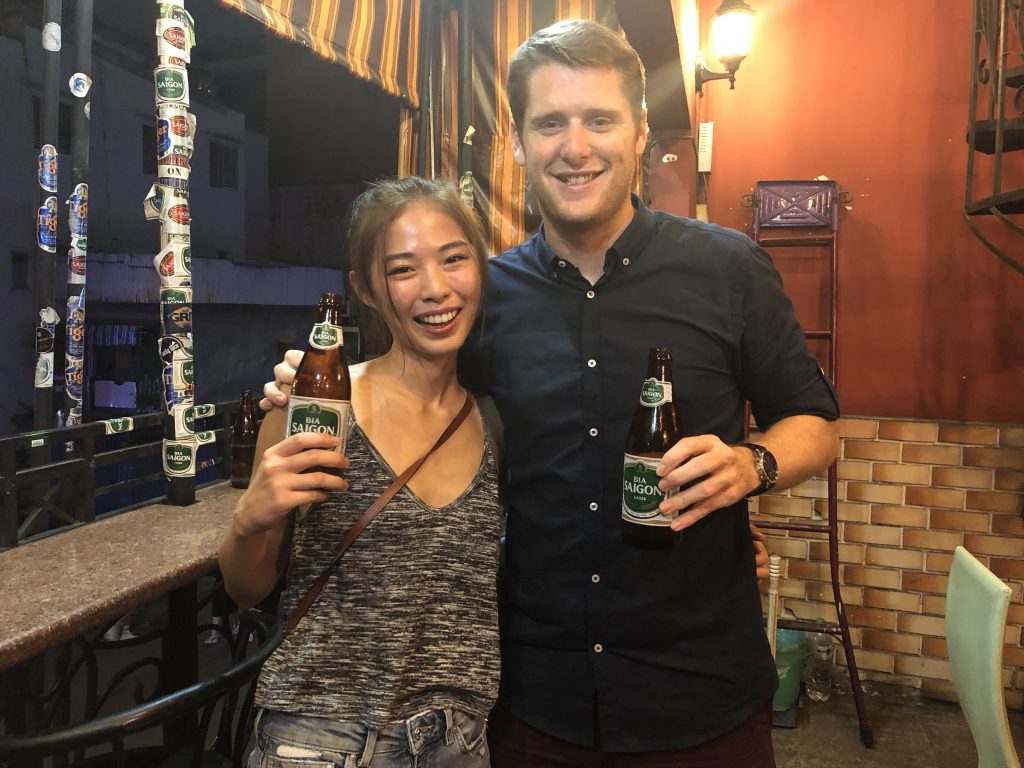
Nydia and I had all sorts of interesting encounters, and I could see how international and diverse Ho Chi Minh was. I got back to the hostel pretty late after a super cheap taxi ($2 US).
I started my day around 11, and it was already scorching. The humidity stifles you. I went to City Hall again to see it glisten in the daylight, and after walking the length of the building, I said to myself ‘alright, it’s too hot, I gotta hire a motorbike to get some air.’ It’s easy because they ask at an annoying level, much like Cambodia. It’s not annoying when you need one, so I did appreciate the convenience right then.
The guide took me on a tour of most of the important sites in Ho Chi Minh including the War Remnants Museum, Ho Chi Minh City Museum, General Post Office, and Notre Dame Cathedral, the latter three of which are some of the best colonial buildings in the city.
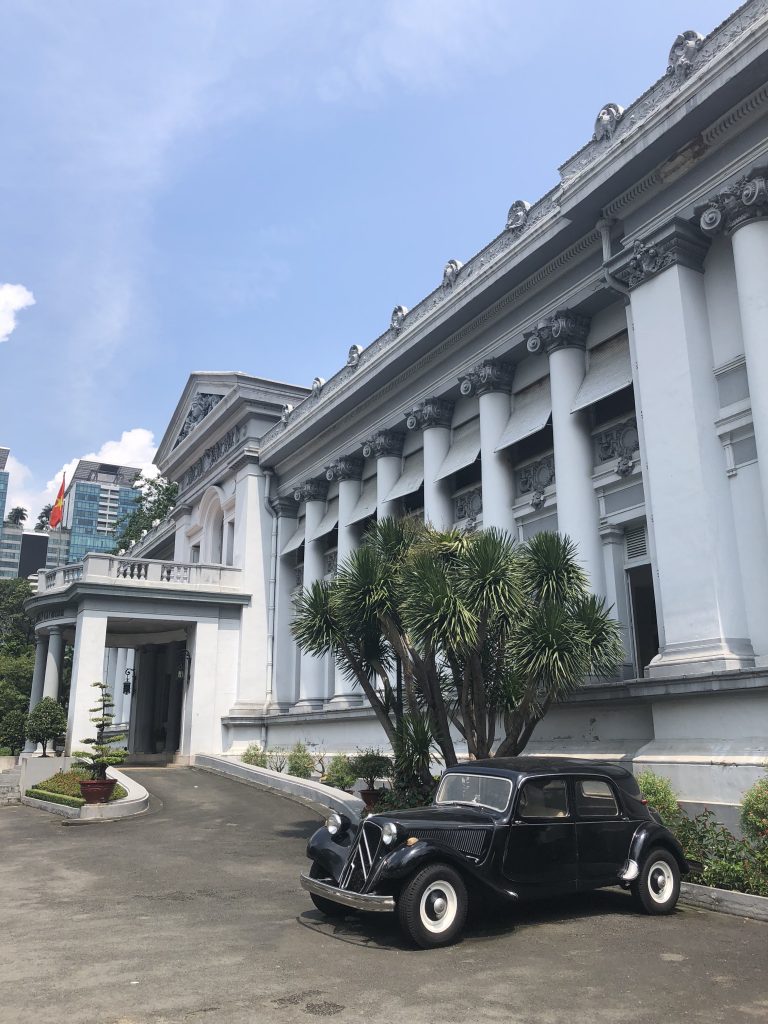
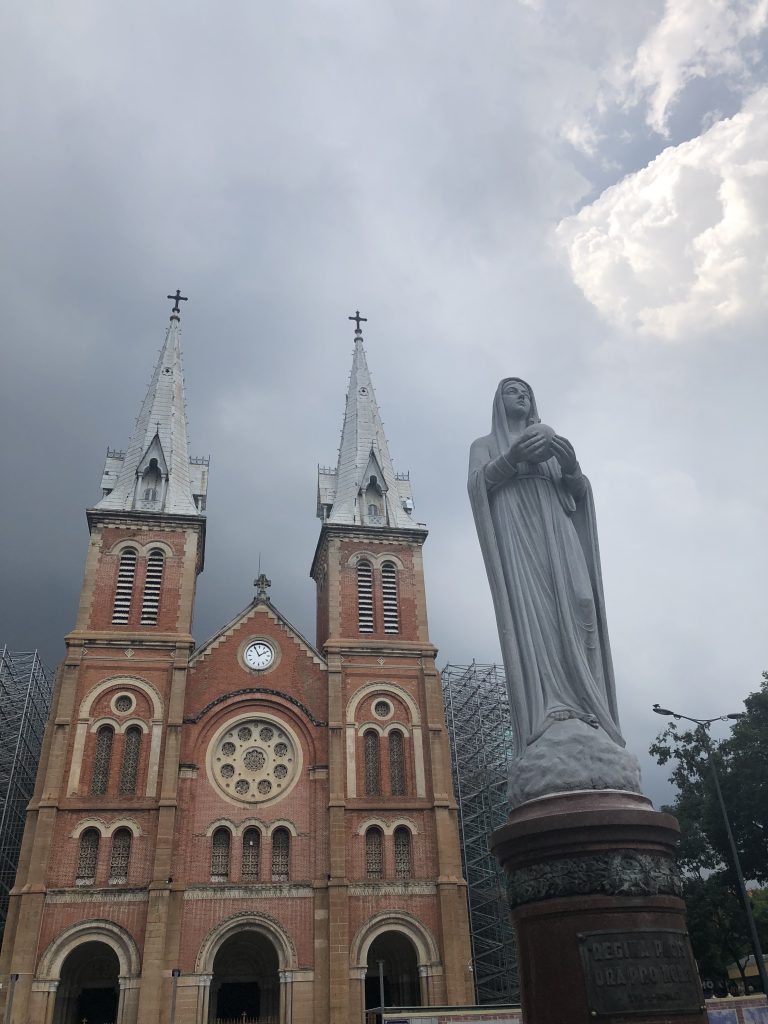
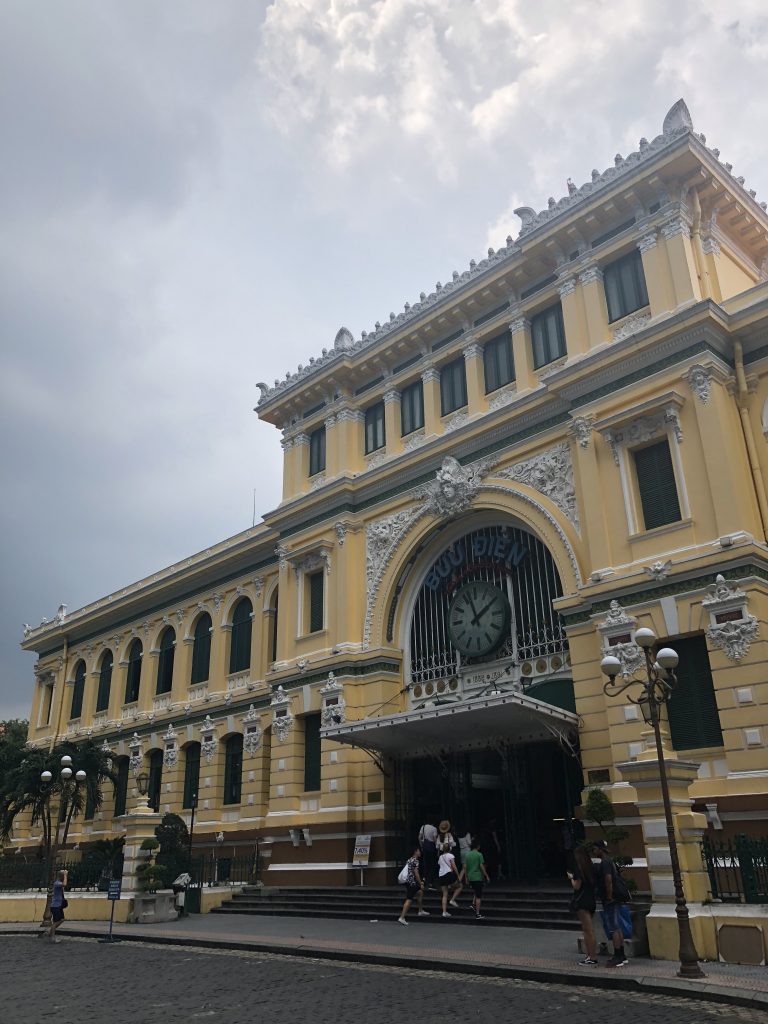
I love the way that the city has preserved and built around the heritage buildings, which as I mentioned before, gives the place this unique soul and character. The stunning structures are engrained in their history, and it’s important to their society that they maintain them.
War Remnants Museum, however, was the most powerful. Being an American myself, and seeing the planes, helicopters, boats, flamethrowers that were used in the war made me think about our involvement in Southeast Asia. I visited Cambodia six months prior, and I saw what had happened there directly and indirectly from US involvement. Things could have been handled better. It’s hard to argue against the possible effects of staying out completely, which would have resulted in many more deaths and suffering. But there was hardly a strategy, and any war is atrocious.
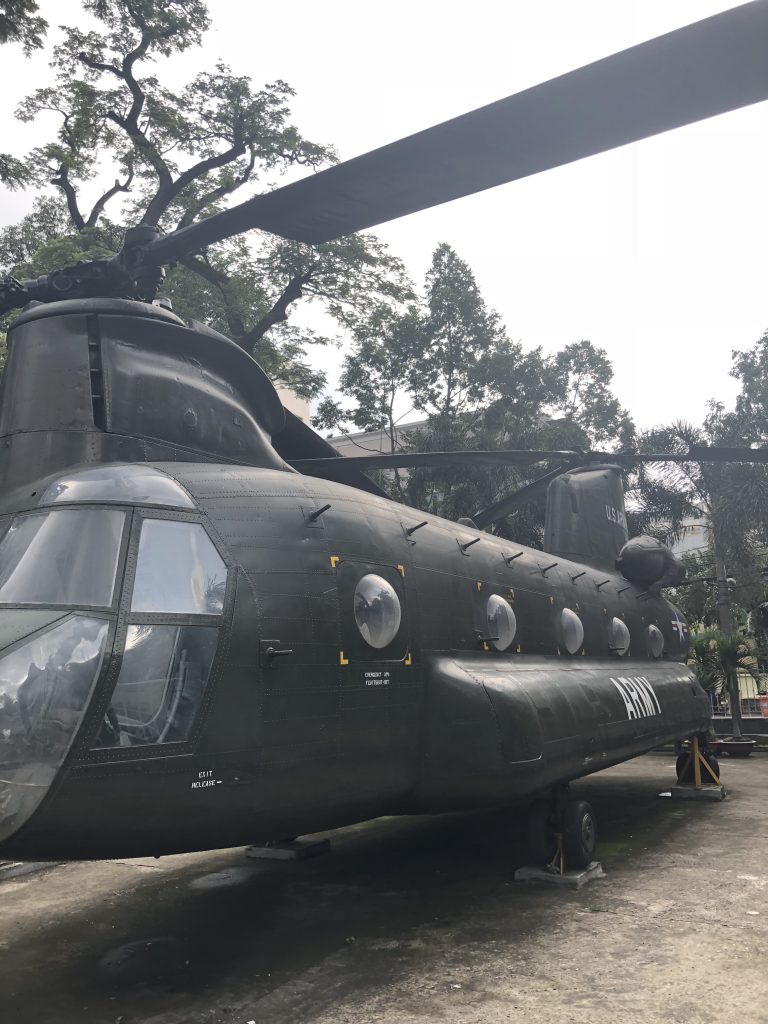
After exploring the historical side of Vietnam, I grabbed dinner at “The Amazing Banh Mi Cart” before a rainstorm struck and I was stranded. I had a nice conversation with the owner, whose family had been making Banh Mi’s on that corner for 30 years.
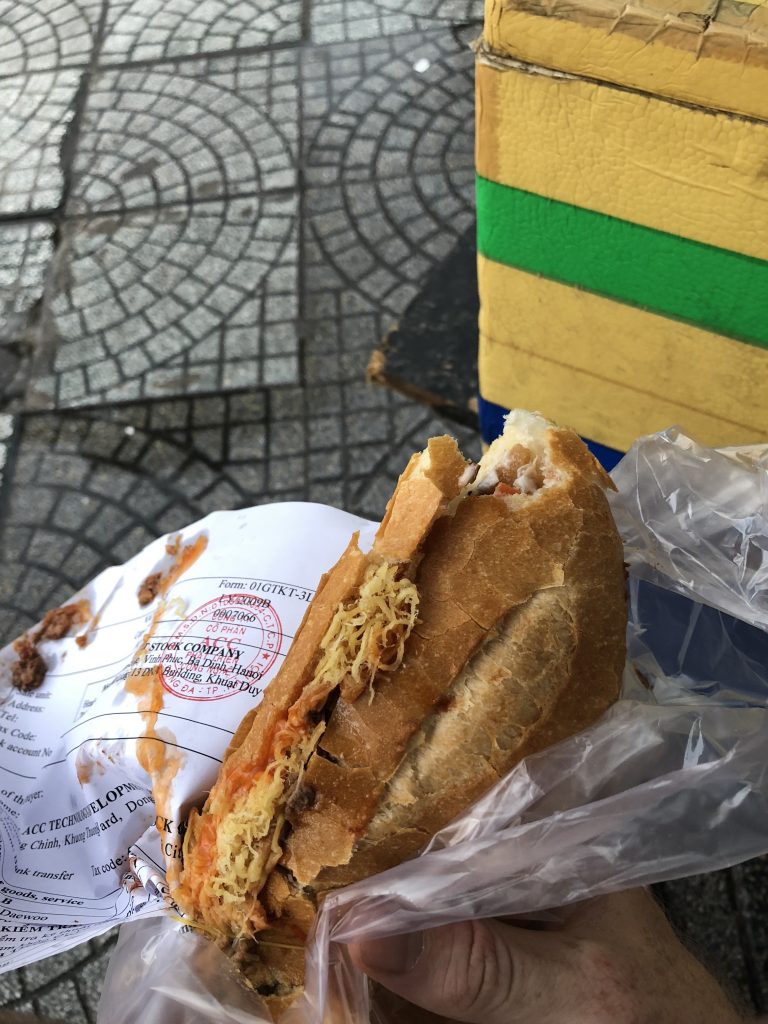
My flight left at midnight back to Taipei, so I to wind down I washed down some fried spring rolls with a pint of Saigon beer and watched Arsenal dispatch Watford before taking another inexpensive taxi to the airport for my flight back to Taipei.
Vietnam is a place with amazingly friendly people, whose past does not seem to affect their lives today, and treated me and others with respect. I’m grateful for the experience of incredible food and a city whose charm and beauty exceeded my expectations. I’ll be coming back for more than just two days next time.
Latest posts by Doug Chesney (see all)
- 48 Hours in Ho Chi Minh City, Vietnam - November 9, 2018
- The Nine Colonial Colleges - October 3, 2018
- Top 10 Colonial Buildings in Phnom Penh - September 12, 2018
